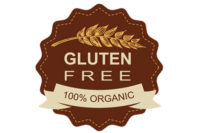August marked the completion of the gluten-free labeling rule development process. Published in August 2013 by FDA, the final rule put parameters around the voluntary use of the terms “gluten-free,” “free of gluten,” “no gluten” and “without gluten” on food labels. The government, food manufacturers, health-care professionals and gluten-free community can now turn a collective eye toward regulation and enforcement.
As stated by FDA, all products bearing the gluten-free claim must contain less than 20 parts per million (ppm) gluten. However, FDA does not require manufacturers to test foods carrying the claim. So even before the labeling rule went into effect, researchers were interested in determining the safety of the many gluten-free products available in the marketplace.
Although FDA does not require product testing, companies are held to the standard of less than 20 ppm, and food makers often include ingredient or product testing as one of multiple components of a quality-control program. The available research reflects the general rigor of these programs.
While a safe food supply is a necessity for everyone, it is of paramount importance for those with celiac disease. Mere morsels of a gluten-contaminated food can trigger unpleasant symptoms in these individuals. If this happens on a chronic basis, serious, long-term health consequences can occur. In light of this, various research teams throughout the United States and Canada conducted independent testing of gluten-free products, including those labeled gluten-free and those naturally gluten-free, but not labeled as such.
The available research paints a largely positive picture. Two recent studies from Health Canada and FDA found only 1% of products with a gluten-free claim tested over 20 ppm (see chart). An American study conducted by dietitians Tricia Thompson and Suzanne Simpson and published on Oct. 1, 2014 ahead of print publication in the European Journal of Clinical Nutrition evaluated 158 products labeled gluten-free and discovered 5.1% of products exceeded the 20 ppm limit for gluten. Despite the small presence of contamination in these samples, manufacturers still have room for improvement to consistently meet the standard of less than 20 ppm required for a gluten-free claim.
Looking more broadly at naturally gluten-free foods that did not use a gluten-free label claim, the findings were grimmer—10.1% to 19.4% of these products contained more than 20 ppm gluten. While the study was not always able to parse out the source of the gluten contamination, the findings are consistent with an unrelated 2013 analysis authored by Steven M. Gendel, Ph.D., and Jianmei Zhu, Ph.D., at FDA.
Published in the Journal of Food Protection in 2013 (Vol. 76, No. 11), the paper offers key insights for the industry. First, allergens are the most-common reason for food recalls. Second, wheat is the second-most-responsible allergen for such recalls, bested only by milk. Third, when looking at the food categories comprising these events, bakery products were at the top of the list (31.5% of cases), followed by snack products at 12.1%.
Oats deserve special mention. While they’re a naturally gluten-free grain, they’re frequently contaminated with wheat, rye and/or barley, as several recent studies have found. Oats are often grown on fields that previously grew gluten-containing grains, are harvested and transported with shared equipment, or are processed in facilities not dedicated to oats.
Oats can bolster the nutritional value of gluten-free products, but manufacturers must ensure that specially produced gluten-free oats are being sourced, as highlighted in “Special Report: The Use of Oats in Gluten-Free Foods” on the Gluten Free Watchdog website (www.glutenfreewatchdog.org/blog/Special-Report-The-Use-of-Oats-in-Gluten-Free-Foods/36).
Overall, though, the food industry is providing safe options for gluten-free consumers, and the new labeling regulations should help advance this trend.










